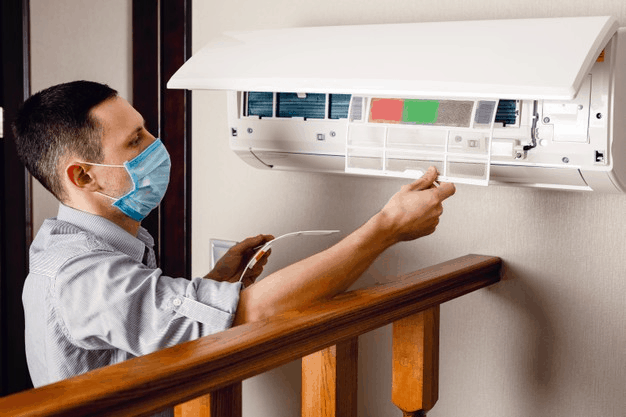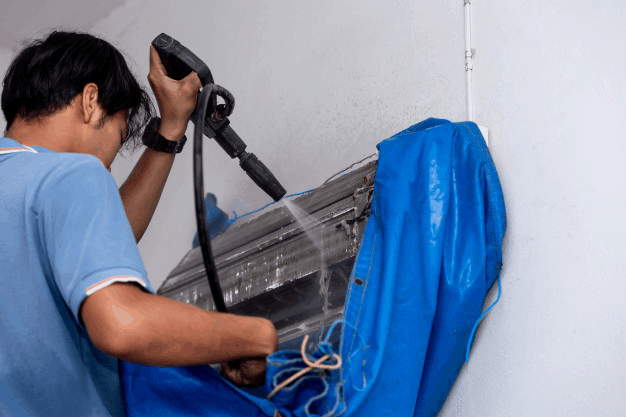Indoor Air Quality and Floor Air Distribution
Indoor Air Quality Directly Impacted by Floor Air Distribution
Floor, wall and ceiling mounted to meet your unique project design.

With Americans spending 90% of their time indoors, HVAC and indoor air quality is a central concern for both building owners and occupants. This leads to a lot of people spending time indoors and suffering the negative impacts of indoor air quality (IAQ).
To prevent these problems, it helps to know what the most common air quality issues are and how to prevent them.
From periodic duct cleaning to HEPA filters and air cleaners, there are many ways that business owners and occupants are enhancing their HVAC systems to deal with common IAQ issues.
Let’s look at four common HVAC issues, how they affect IAQ, and how some of these problems can be fixed.
Many people suffer from seasonal allergies. However, these symptoms can be worsened because of a poorly maintained HVAC. Allergens like pollen, pet dander and dust mites can collect in air ducts that have not been cleaned and filters that are not replaced regularly.
Taking steps to reduce the concentration of allergens can make the space safer and more comfortable for occupants.
There are many things that you can do to get fresh air in, while keeping allergens out:
A one-speed heating and cooling system can impact your building’s humidity. According to a study conducted in 2020, single-speed systems underperform at maintaining ideal indoor humidity.
While high indoor humidity may not seem to be a problem, it can increase the presence of indoor air pollutants. Conversely, low indoor humidity can create a perfect environment for pathogens like the influenza viruses and even the novel coronavirus.
If you have a persistent humidity problem, you should consider installing an underfloor air distribution system. With a underfloor air distribution (UFAD) air conditioning system you can:

Mold growth is a pressing health concern that must be solved quickly, before it affects your HVAC and indoor air quality. Though mold can appear anywhere, high levels of humidity and a warm environment encourage mold build-up.
It may not be completely obvious that you have a mold infestation. Some warning signs are:
Mold is a persistent enemy. Getting rid of it once doesn’t mean it’s gone forever. Here are a few things you can do to prevent mold from affecting your indoor air quality and HVAC:
Poor airflow can be caused due to improper duct planning. Air will stagnate in an area if it does not have sufficient vents and registers. A lack of ventilation can cause pollutants to build-up and lower your HVAC and indoor air quality.
Since most pollutants are usually odorless, you may not even realize they are affecting your health. Inadequate air circulation has the potential to cause anything from minor to life threatening ailments. In some cases, deadly amounts of radon or carbon monoxide can build up quickly in poorly ventilated buildings.
There are several ways you can prevent the build-up of pollutants and improve IAQ. A few options are:
Traditional HVAC systems lack the temperature control and filtration required to maintain indoor air quality. If you are looking for an HVAC that improves IAQ, consider an underfloor air distribution (UFAD) system.
UFAD has been widely installed around the world for over 20 years by Airfixture. It works by pushing fresh air into the building at the floor level, while cycling out old air at the ceiling. This helps reduce the buildup of pollutants, improving IAQ.
If you are worried about potential IAQ and HVAC problems affecting you and your employees, consider installing a UFAD system. You will ultimately save money on HVAC repairs, and energy costs while ensuring your space is filled with clean air.
Contact AirFixture today and find out how a custom UFAD system can greatly improve your building’s indoor air quality while keeping your staff safe.
Indoor Air Quality Directly Impacted by Floor Air Distribution

As one of the leading health issues globally, indoor air pollution poses a very real environmental health concern to home and building occupants -...

With so many outdoor air concerns related to the heat, humidity, and ozone, it’s easy to forget that indoor air quality (IAQ) is just as important --...